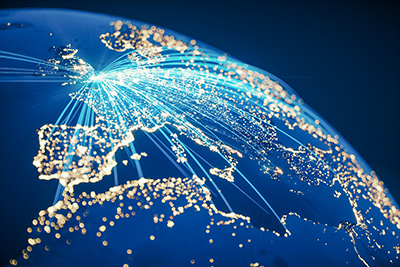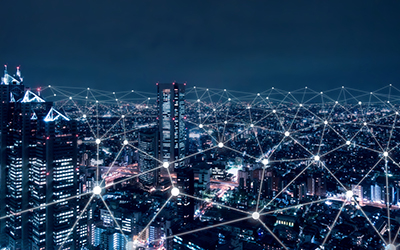
What does the energy industry of tomorrow look like? As more distributed energy resources and connected devices come online, the aging electrical grid may become more difficult to maintain. However, at the same time, these resources will make it easier for utilities to balance loads and improve the future of the grid. As the grid and technology evolve, so will the industry, transforming utilities into something beyond energy providers.
Here are four articles that you should read exploring how changes to the grid will influence the industry.
EY: When Customers Go Off-Grid, Will Energy Companies Be Left in the Dark? by Benoit Laclau
Laclau predicts that three tipping points, expected to evolve over the next two decades, will signal a sea change in the industry: off-grid performance parity, electric vehicles performance parity and the cost benefit to generating and storing power locally versus transporting. The consequences will include rising grid maintenance costs, partially because of the added electric vehicle (EV) load, and an increase in third-party disrupters. There will be more demands on the smart grid – and more demands on utilities themselves for services beyond being an energy provider.
“The truth is that as technology evolves and sectors converge, the resulting business possibilities will grow exponentially and take forms that we cannot even imagine today. Twenty years ago, did telco bosses envision that one day we could control almost our entire lives from a handheld smartphone?
Instead of trying to predict the future of energy innovation, energy companies should focus on building an agile, collaborative business that is ready to quickly pivot to take advantage of new technology and trends. Our advice for energy companies preparing for the imminent tipping points of their sector is to make smart ‘no regrets’ investments now while planning for a very different future.”
Forbes: Renewable Energy Boom Is Pushing the Grid to Its Limits, Prompting Operators to Reinvent Themselves by Jean-Marc Ollagnier
Ollagnier agrees that there will be more demand on the grid, primarily distributed energy resources (DER), and it will make it more difficult and expensive to maintain. This will put a “severe” strain on the grid at least until 2025 as more DERs come online than the grid can reliably handle. As utilities transform themselves into the energy providers of tomorrow, they will evolve from asset owners to asset managers, creating a more adaptable, optimized grid.
“As grid customers increasingly participate in the energy system through distributed energy resources, demand response programs and microgrids, operators will have an opportunity to increasingly connect with their customers and create new revenue streams. Providing new services platforms, for example, would allow consumers to adapt their electricity consumption habits such as electric vehicle (EV) charging times in response to financial incentives.

However, few companies will have all the resources to fully master the technologies of today and tomorrow. The rapid pace and complexity of innovative technologies will call for distribution companies to increasingly tap into an ecosystem of partnerships, innovation hubs and research labs.”
Utility Dive: 2019 Demand Response Outlook: The Rise of Distributed Resources by Robert Walton
Walton predicts that utilities will use DERs not only to balance load, but for forecasting and system planning, merging demand-side and grid-distribution management will improve the future of the grid. Smart devices will continue to proliferate, going beyond thermostats to include connected appliances that will include built-in demand response capabilities. Finally, natural gas suppliers will join electrical suppliers in using demand response to address pipeline constraints.
“Perhaps the biggest shift in the works will be the addition of more resources to the grid — more supply and load that can be influenced by utilities in order to balance the grid. Major opportunities in the near-term are likely to come from batteries and electric vehicles (EVs), say experts, along with distributed solar, smaller appliances and a mix of customer programs and rates.
‘In the future, utilities will need to be able to manage all of those holistically, and think of how they all work together,’ said Julia Lundin, director of product marketing at Oracle, which in 2016 purchased cloud computing and behavioral demand response provider Opower.”
T&D World: Non-Wires Alternatives: Nontraditional Solutions to Grid Needs by Cristin Lyons, Greg Litra and Chris Sturgill
As DERs have decreased in cost and utilities have considered their impact on distribution during planning, stakeholders are encouraging alternatives to high-cost distribution system projects, including non-wire alternatives (NWA). A combination of energy efficiency and demand response, along with DERs, reduces costs and carbon while making the grid more flexible. However, traditional utilities may not own NWAs and there isn’t yet much data or history for predicting outcomes.
“One early program, widely touted as a successful NWA, is Con Edison’s Brooklyn-Queens Demand Management program (BQDM). BQDM was implemented before consideration of NWAs was formally mandated, but it used NWA evaluation elements, which were ultimately adopted by the NYPSC. BQDM used primarily energy efficiency, as well as customer-sited distributed generation (combined heat and power, fuel cells, and rooftop solar), distribution voltage optimization, and utility-sited storage, to achieve more than 50 MWs of peak demand reduction at a total projected program cost of about $200 million, versus adding a substation and transmission feeders at the cost of more than $1 billion.”
The industry and the grid will see changes large and small in the coming years, and those companies who are early adopters of technology that allows the grid to be both smart and flexible will be well-positioned for the future of the grid and energy’s next chapter.
Utilities are looking for opportunities to connect more deeply with consumers. HomeServe helps to improve consumer engagement for our utility partners through the integration of complementary home repair programs with utility initiatives such as energy efficiency and safety, offering residents greater access and choice. Partnership allows the utility to leverage HomeServe’s marketing and communications expertise to educate their consumers through a variety of channels. For more information, contact us.

